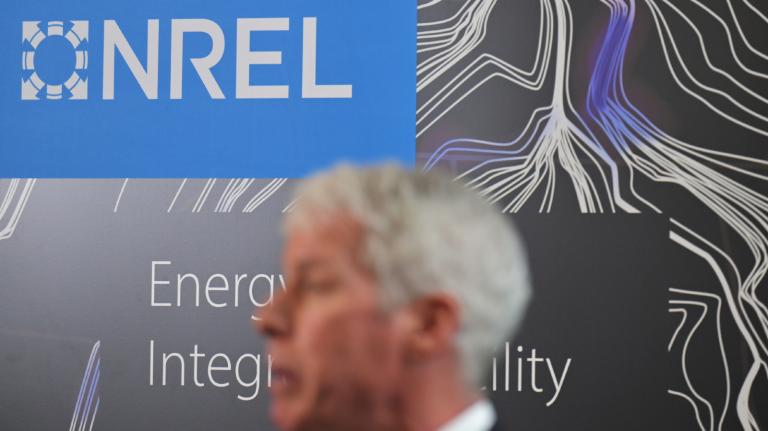Ralph Hall.Photo: vexroboticsCross-posted from ThinkProgress Green.
Rep. Ralph Hall (R-Texas), the science-denying chairman of the House science committee, says a federal clean energy standard would be an “expensive new electricity tax on the American people,” based on a study he requested. An analysis by the Energy Information Administration (EIA) of a clean energy standard (CES) he designed finds that “household electricity bills could jump an average of $115 per year by 2025.” President Obama has called for a CES of 80 percent clean electricity production by 2035, allowing for production from renewable sources, nuclear, natural gas, and coal, with carbon capture and sequestration. This goal would mean that America’s aging, dirty coal plants would be mostly phased out over the next 25 years.
Defending the coal industry that funds him, Hall attacked the president’s plan based on the EIA report:
This report — prepared by independent government experts — makes clear that the CES amounts to an expensive new electricity tax on the American people. With an anemic economy and unemployment stuck above 9 percent, it is very troubling that the president continues to pursue an energy policy that would add billions to Americans’ energy bills.
Hall fails to mention that the EIA analysis says the “impacts on electricity prices prior to 2015 are negligible.” In other words, this standard poses no threat to the “anemic economy” of today. In fact, the EIA projects that employment will increase over the reference case by 2030.
Furthermore, the EIA analyzed a clean energy standard proposed by Hall, not by the Obama administration. The EIA makes that clear throughout its report, saying their analysis is of the Hall Clean Energy Standard (HCES). Hall’s CES was purposely designed to compel rapid investment in new electricity production without flexibility, which EIA models as a high cost. The inflexibility Hall required [PDF] includes these provisos:
There is no option to purchase compliance credits from the government.
HCES credits earned in one year cannot be “banked” for use in a subsequent year.
All electricity retailers are covered by the requirement, regardless of ownership type or size.
There is no provision for excluding any electricity sales from a seller’s baseline based on resources used to produce the electricity or type of customer purchasing the electricity.
This report’s findings are a result of Hall’s deliberate gaming of the economic tools of the EIA. Moreover, they reflect the assumptions that energy economists use to analyze policy instruments, even though those assumptions have been proven false by history. The health costs of coal pollution are not incorporated, even though top economists have found that coal-powered electricity is dragging down the U.S. economy by ruining Americans’ health. The EIA projects that electricity prices would increase by 2.7 cents per kilowatt-hour (kwH) by 2035, which is almost exactly what economists found as the annual cost of health damages [PDF] from coal pollution today (2.8 cents per kWh).
To repeat — the “costs” that the EIA projects in 25 years as a result of Hall’s rigid clean energy standard are already being paid today by Americans through suffering and death, especially our children and elderly. A clean energy standard would replace the economic costs of asthma and heart disease with investment in new jobs and technology.
The EIA also ignores the existence of global warming, with a reference case that has the United States continuing to increase its greenhouse pollution for decades, even though that would mean planetwide catastrophe. As the International Energy Agency’s World Energy Outlook describes, in a “climate friendly” scenario, “the power sector is largely decarbonized by 2035.”
Under Ralph Hall’s inflexible clean energy standard, the EIA finds that annual electricity sector carbon dioxide emissions would decrease by more than 60 percent from the reference case by 2035. Using an estimate of the social cost of carbon as $100 per ton of carbon dioxide, the benefits of that decline would reach $100 billion a year in 2035, far outweighing the supposed “costs” of shutting down “cheap” electricity from high-polluting coal plants.




